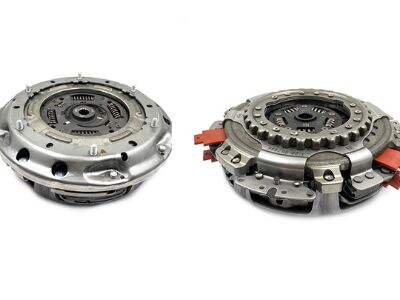У машины з ручнай трансмісіяй у нас ёсць право пераключаць шыня через падалку, і левая падалка дазволіць машине ходзіць уперад і назад. Падалка, якую мы знаходзім левей тормаза, дзейнічай важная, бо дазволяе нам кантраліраваць бажаную хуткасць. Часамі мы бачым, што падалка дужа трясецца, і гэта трасенне можа быць насталькі сільным, што трасецца ўся машина! Гэта большая праблема для водзяў, але з дапамогай BOUNDFAS мы можам разумець, што дзеяніча адбываецца ўнутры машины і чаму падалка вібраце.
Як працуе супраўдник?
Каб аб’ясніць, чаму пад лапкам клатчы дрыжыць, нам спачатку трэба разумець, як сам клатч працуе. Унутрэйшыя рухомыя часткі ў дzyгуне запалюцца, калі мы нажмем на лапку. Jedna з гэтых асноўных кампанентоў — гэта «фрыкцыянная пластына хаб». Гэтая кампанента мае форму, сапраўды сходную з блiнам, і дазваляе клатчу зацапляцца з дzyгунам, каб машина магла ехать плавна. Мы будзем чуць гэты трус у лапцы, якую ціснем, вызначана больш, калі фрыкцыянная пластына хаб пачyna дрыжaць.
Што спрычынае трус хаба фрыкцыyanнай пласткi?
Але спачатку, чым жа ўзбудзена дрыжанне пластыны фрэнту? Існуе шмат тлумачэнняў гэтага явы! Напрыклад, калі карыстацца машынай у вынік даўніх перамяшчэнняў, унутраныя часткі дzyгаменя могуць зарэдзець, і мы спрычынаем, што яно пачынае вібрацы. Гэта можа адбыцца з любым транспартным серадкам, упершую з тымі, якія булы інтэнсіўна выкарыстаныя. Інодзі ўнутрана дарэчы цяжчае больш сур'ёзная прычына. Падшипнік — гэта злучальная частка дzyгаменя, якая дазваляе яго часткам вертася больш гладка на месцы, і калі адзін з іх выйдзе з эксплуатацыі, уся дzyгамень пачынае дрыжати. Гэтая вібрацыя можа працягнуцца ўсю дарогу да педалю супрацоў, па прычыне чаго мы можам яе адчувaць.
Некалькі частых прычын проблем з супрацоў
Є некалькі прычын, якія могуць зrobіць нашу супраўдну ўзбудку. Найбуйнейшымі прычынамі з'яўляюцца зношаныя часткі, паламаныя падшипнікі ці няправільна выраўнаныя дэрыжкі дzyнама-машыны. Каб розкодаваць, што фактычна адбываецца, нам верагодна трэба будзе дапамогі машыніста. Машыніст — гэта чалавек, які мае добрае ведаўства аб аўтамабілях і робіць іх паслядоўна. Яны пераглянут разныя кампаненты супраўднага узброення і вызначат будут, ці ёсць якія-небудзь часткі, якія не працуюць правільна ці стала зношанымі раней, чым слiд.
Кампаненты, якія магут спрычынiць дрыжджы супраўды
Давальнай плiтка — гэта адна з такiх частак, i можа спрычынiць дрыжджы супраўды. Гэты кампанент дужа важны, бо вытворае ціск супраўды да дынама-машыны, дазваляючы машине лёгка рухацца наперад. Калі давальнай плiтка згiнутая, пашкоджана ці просто зношана, яна не можа выконваць сваю працу. Прычынляючы дрыжджы ўвесь супраўдны сістэмы, што мы пачуем у падалковы кран, які мы ціснем.
Іншай частой прычынай, якая можа прывяць да паліленьня сапраўды ў клатцы перадач, з'яўляецца падшипнік валу ўводу трансмісіі. Гэты раздзел адпавядае за тое, каб дапамагчы зубчатым колам унутры движка перамяшчацца гладка. І калі гэты падшипнік, які дазваляе валу ўводу рухацца свабодна, ламаецца ці вынашваецца, уся трансмісія можа палілецца. І як і ў выпадку давальніка ціскавага дыска, гэтае паліленьне можа перадавацца ўсё назад да педалі клаткі, чым robіць складанай гладка кіраваць машина.
Наведзена прычына праблемы
Калі нам трэба дыягназіраваць трусці падалю клачы, нам прыходзіцца ўзяць ў ўлік усё звышняе, што адносіцца да працавання клачы і дыяння мотора. Мы не хочам лікаўваць толькі адну частку і спадзеватися, што праблема зanідзе. Нам трэба канцэнтраваць увагу на тым, каб усі часткі працавалі правільна. У гэтым выпадку мы падтварае плавнасць і безпеку жарання машины. Дзякуючы BOUNDFAS, мы можам пераконаться, што наша машина знаходзіцца ў дабрым стане, і нам не придзецца мацать з трусцямі падаліў падчас жарання!


